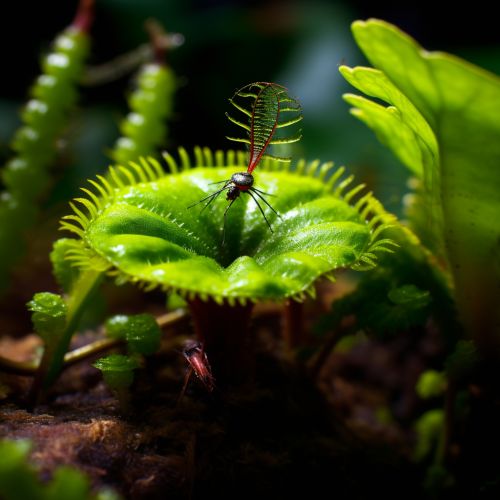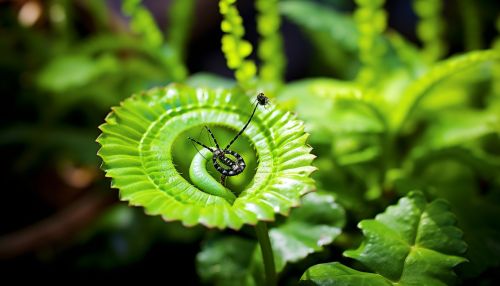Insectivorous Plants
Introduction
Insectivorous plants, also known as carnivorous plants, are a unique group of flora that have adapted to grow in places where the soil is thin or poor in nutrients, especially nitrogen, such as acidic bogs and rock outcroppings. These plants derive some or most of their nutrients from trapping and consuming insects or other small animals.


Evolution
The evolution of carnivory in plants is thought to have independently occurred at least six times, and currently there are more than 600 recognized species that exhibit insectivorous properties. The development of carnivorous traits has been driven by their environments. In nutrient-poor environments, these plants have evolved to attract, trap, kill, and digest insects to supplement their nutrient intake. This has allowed them to survive and thrive in habitats where other plants struggle to exist.
Classification
Insectivorous plants are classified into several orders, families, and genera. The largest and most well-known family is the Droseraceae, which includes sundews and Venus flytraps. Other notable families include the Sarraceniaceae, which are native to North America, and the Nepenthaceae, which are native to the Old World tropics.
Mechanisms of Trapping
Insectivorous plants use various mechanisms to trap their prey. These mechanisms can be broadly classified into five types: pitfall traps, flypaper traps, snap traps, bladder traps, and lobster-pot traps.
Pitfall Traps
Pitfall traps, also known as pitcher traps, are used by plants such as the pitcher plant. The plant forms a deep cavity filled with digestive liquid. The rim of the pitcher (peristome) is slippery when wet, causing insects to fall into the trap.
Flypaper Traps
Flypaper traps use a sticky mucilage, or glue, to trap insects. The sundew is a classic example of a plant that uses this method. The plant's leaves have stalked glands covered in sweet, sticky mucilage that traps insects.
Snap Traps
Snap traps are employed by the famous Venus flytrap. The plant's leaves are modified to snap shut when an insect lands on them. The closure of the leaves is triggered by the insect touching the plant's sensory hairs.
Bladder Traps
Bladder traps are used by aquatic insectivorous plants such as the bladderwort. The plant has small, bladder-like traps that can suck in small organisms using a partial vacuum.
Lobster-Pot Traps
Lobster-pot traps are used by plants like the corkscrew plant. These traps guide prey down a path lined with downward-pointing hairs, which prevent the prey from escaping.
Digestion and Absorption
Once the prey is trapped, the plant produces digestive enzymes to break down the insect. The process of digestion varies among different types of insectivorous plants, but generally involves the secretion of enzymes such as proteases and phosphatases that break down proteins and phosphates in the insect's body. The resulting nutrients are then absorbed by the plant.
Ecological Impact
Insectivorous plants play a significant role in their ecosystems. They help control insect populations and provide a source of nutrients for other organisms. Some insectivorous plants also have symbiotic relationships with certain insects, providing them with a safe habitat in exchange for pollination or protection from predators.
Conservation
Many species of insectivorous plants are threatened by habitat loss, pollution, and over-collection. Conservation efforts are crucial to protect these unique plants and the ecosystems they inhabit.
